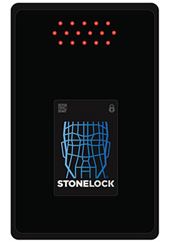The market analysis company IHS Markit thinks that 2017 will be a step up for video analytics. Previously, the market has suffered from high expectations that have not been met, but now IHS expects that market confidence will be boosted by a new generation of video analytics, which will be powered by deep learning, big data analysis and high performance computing.
Lower costs
Avigilon is one of the companies to claim that the video analytics industry has reached a tipping point. “We think we are at a defining moment in the industry where artificial intelligence and deep learning has radically started to change our ability to apply video analytics into video surveillance”, says Willem Ryan, Senior Director of Global Marketing at Avigilon. He also stresses that the costs for video analytics have been driven down and its performance has increased tremendously.
Milestone System’s Regional Sales Manager, Lars Wilson, also thinks that the market for video analytics will grow. ”Definitely, when I started working for Milestone nine years ago we had 50-60 video analytics partners. Today we have 800-900 and that is a clear indication of a growing market.” He thinks that the algorithms are more mature today and that the market for video analytics will become more vertical. “For example, a lot of customers look at the benefits video analytics bring to retail, or to transportation, and what kind of problems they can solve. I think we will see a lot more of this and there will be more vertical specialists in the market, who will know a lot about the challenges within their area of expertise”, he says.
Lars Wilson believes that retail and transportation are the most interesting verticals for video analytics. Willem Ryan stresses that all verticals will grow and there are analytics in a lot of applications today: retail, hospitals, transportation, airports, ports, critical infrastructure, health care, education and more.
Analytics were too demanding
Anders Karlsson, Product Marketing Manager for Bosch in Northern Europe, says that the biggest challenge for the industry is to restore trust among end users and show that today’s security cameras are good enough to conduct video analytics. “The kind of video analytics that was used a few years ago demanded hands-on, continuous updating and adjusting in order to make it work. Those who did not have the time or expertise to do that thought that video analytics were not good enough”, Anders Karlsson says. Both installers, monitoring centres and end customers had bad experiences. Some of them decided to only use video analytics together with thermal cameras. “To be honest, it is perhaps only since the beginning of 2016, that the industry has reached a level where the detection is reliable both for indoor and outdoor video analytics. And now, we are facing the challenge to prove that surveillance cameras are good enough.”
More analytics at the edge
In the dawn of video analysis, server based analytics was the preferred way of conducting the analysis. However, during the last couple of years, camera-based video analytics at the edge has increased. According to IHS, the market for server-based analytics decreased by 39.4 million dollars in 2014, but analytics as a whole still grew because of a strong growth in analytics at the edge. However, the demand for high-end server based analytics is expected to remain.
Lars Wilson thinks that video analytics at the edge will grow faster than server-based analytics. “It is cheaper to do the analysis in the cameras and you might not add analytics to all your cameras. We support both solutions, but we can see it is has taken off stronger at the edge”, he says.
Providing business intelligence
Video analytics applications can basically be split into three categories: detecting someone, or something while it is happening, for example, search for information after an incident has taken place and finally using video analytics in order to generate business intelligence data. Lars Wilson believes that video analytics for business intelligence will grow faster with applications like people counting and conversion rates and Anders Karlsson agrees: “Business intelligence applications will probably grow faster and become bigger than the other two, perhaps not this year or next year, but soon. However, the other two will grow too, because the technology will become cheaper and personnel guarding more expensive.”
















